Parmigianino (1503-1540)
Parmigianino (1503-1540)
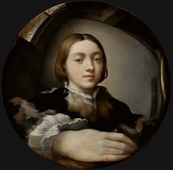 Also known as Parmigianino; Mazzola, Girolamo Francesco Maria; Parmigianino, Francesco; Mazzuoli, Francois; Mazzuoli, Francesco Painter, etcher and designer for engraving and woodcut, exponent of Mannerism with an emphasis on elongated forms, worked in Parma, Rome and Bologna. After the death of his father, Filippo Mazzola, in 1505, Parmigianino was brought up by his uncles Michele and Pier Ilario Mazzola. Like his father, they were painters, and according to Vasari it was from them that he received his earliest training.
Also known as Parmigianino; Mazzola, Girolamo Francesco Maria; Parmigianino, Francesco; Mazzuoli, Francois; Mazzuoli, Francesco Painter, etcher and designer for engraving and woodcut, exponent of Mannerism with an emphasis on elongated forms, worked in Parma, Rome and Bologna. After the death of his father, Filippo Mazzola, in 1505, Parmigianino was brought up by his uncles Michele and Pier Ilario Mazzola. Like his father, they were painters, and according to Vasari it was from them that he received his earliest training.
'Left: Self-Portrait in Convex Mirror'
In August 1521 he was sent with Girolamo Bedoli to Viadana, to avoid the war then threatening Parma. He returned to Parma in the following year and on 22 November 1522 contracted to decorate the vault and northern apse of the north transept of the Cathedral. So far as is known, this was never begun, but he seems by then to have already embarked on the decoration of side-chapels in S. Giovanni Evangelista. The first two chapels on the l.-hand side are the only ones unanimously accepted as his. The paintings in these show the influence of Correggio who was working in the church at the same time and who had been in Parma since 1519/20. In 1523/4 Parmigianino decorated a room in the Rocca Sanvitale at Fontanellato, near Parma, and later went to Rome where he remained until 1527. When the Sack of Rome took place in May 1527 he had almost completed 'The Virgin and Child with SS. John the Baptist and Jerome', intended for the altar of a chapel in S. Salvatore in Lauro, and now in the National Gallery. Later in the same year he left Rome for Bologna, where he stayed until 1530 or 1531. On 10 May 1531 he contracted with the Fabbricieri of S. Maria della Steccata in Parma to decorate the eastern apse and the vault leading to it. On 27 September 1535, when the decoration should have been completed, his contract was revised to give him further time; but some time after 26 August 1539, having failed to comply with the revised terms, he was imprisoned. On his release he fled to Casalmaggiore, and on 19 December 1539 he was discharged from work on the Steccata.
-
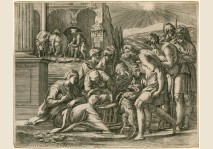
$1,800.00
getRatingSummary()): ?>
Canvas size:
Product type:
THE ADORATION OF THE SHEPHERDS - Parmigianino
-
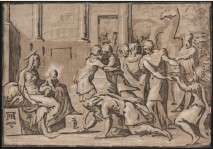
$1,800.00
getRatingSummary()): ?>
Canvas size:
Product type:
Adoration of the Magi - Ca 1535
-
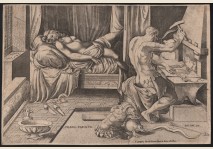
$1,200.00
getRatingSummary()): ?>
Canvas size:
Product type:
Venus and Vulcan - Ca 1540
-
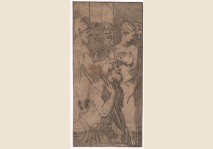
$450.00
getRatingSummary()): ?>
Canvas size:
Product type:
Parmigianino - Healing the Cripple
 Also known as Parmigianino; Mazzola, Girolamo Francesco Maria; Parmigianino, Francesco; Mazzuoli, Francois; Mazzuoli, Francesco Painter, etcher and designer for engraving and woodcut, exponent of Mannerism with an emphasis on elongated forms, worked in Parma, Rome and Bologna. After the death of his father, Filippo Mazzola, in 1505, Parmigianino was brought up by his uncles Michele and Pier Ilario Mazzola. Like his father, they were painters, and according to Vasari it was from them that he received his earliest training.
Also known as Parmigianino; Mazzola, Girolamo Francesco Maria; Parmigianino, Francesco; Mazzuoli, Francois; Mazzuoli, Francesco Painter, etcher and designer for engraving and woodcut, exponent of Mannerism with an emphasis on elongated forms, worked in Parma, Rome and Bologna. After the death of his father, Filippo Mazzola, in 1505, Parmigianino was brought up by his uncles Michele and Pier Ilario Mazzola. Like his father, they were painters, and according to Vasari it was from them that he received his earliest training.










 Facebook
Facebook Twitter
Twitter Subscribe us
Subscribe us Flickr
Flickr




